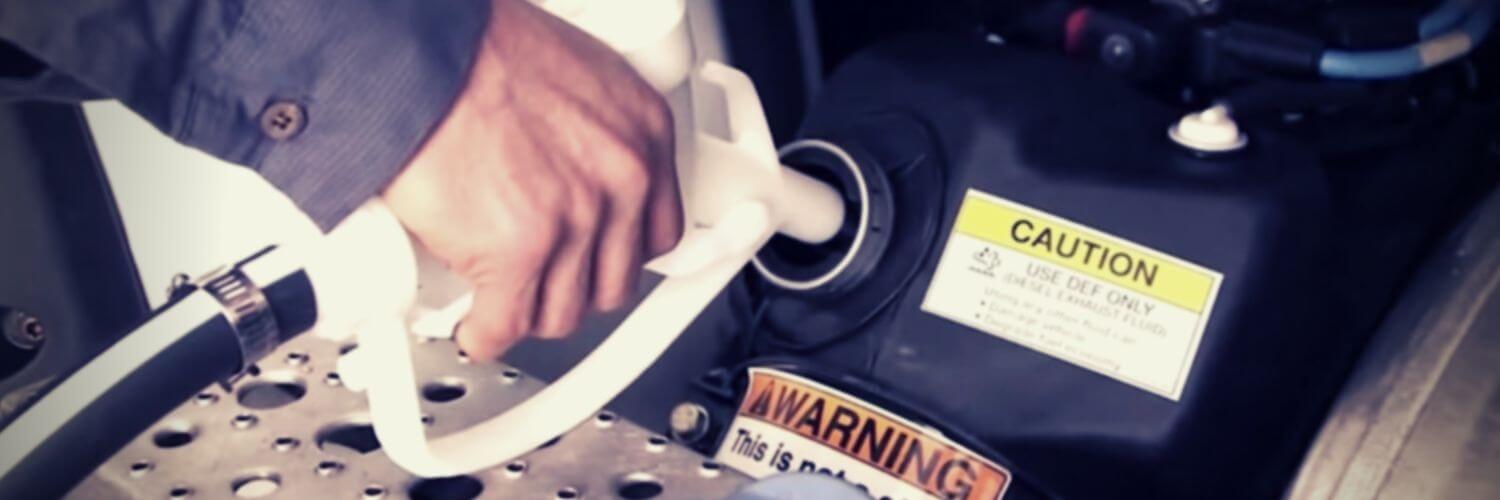Joe Dutchstar
RVF Supporter
- Joined
- Nov 3, 2019
- Messages
- 3,645
- Location
- Florida
- RV Year
- 2024
- RV Make
- Newmar
- RV Model
- Dutch Star 4311
- RV Length
- 43
- Chassis
- Spartan
- Engine
- Cummins
- TOW/TOAD
- 2018 Ford Flex
- Fulltimer
- No
Follow along with the video below to see how to install our site as a web app on your home screen.
Note: This feature may not be available in some browsers.
Thanks Neal. I see your point. As usual you are so knowledgeable and so willing to share. Went to the link and bought it!A lot of chatter on the web of late regarding DEF. While I don't know the details or causes I have a concern on DEF quality based on how many maintain DEF in their RV's. A lot of people like to keep their DEF tanks full, some may let it go down one indicator value such as 1 dot out of 4. Camp Freightliner pushes the rule of thumb to let it go down to two dots (half tank) prior to filling. I'm nearing the end of a long trip and I recently let my DEF get a little lower than normal, intentionally. I wanted to go lower but chickened out.
The concern many have is crystallization of the area above your DEF level. My concern and the reason I let my DEF get down to 1/2 tank prior to filling is DEF concentration, or quality. DEF has a lifespan, it does not last forever, from what I understand. If the DEF is not completely cycled out of your tank then over time you are effectively diluting your DEF by adding new to old, constantly. DEF should effectively be at a 100% concentration, in layman's terms but if you are only adding a 1/2 tank of new to 1/2 tank of old each time, what is your net effective concentration?
If I could I would drain my DEF tank annually and fill with fresh DEF. I haven't looked at what it would take to do this but my concern is growing that over time we are just reducing the quality of DEF in our RV's. My understanding from FL is you can actually run out of DEF and still travel 1,000 miles to get to a location to get DEF. I don't want to be the one to test this nor have I heard of anyone that has but the point is the system is designed to let you completely run out and not immediately de-rate you. I need to work harder on letting my DEF level get lower so I can ensure a higher concentration of quality of DEF is in my system.
The other option is to TEST your DEF. I actually own a refractometer, it's in my pegboard bay, I have yet to use it. When I get back to storage I should test it and see what it reads. I invite others to test your DEF as well and reply with your findings and share your practice of DEF management as described above and let's see what kind of statistics on DEF quality we can come up with.
DEF Refractometer for Measuring Diesel Exhaust Fluid Concentration of Diesel Engines: Amazon.com: Industrial & Scientific
DEF Refractometer for Measuring Diesel Exhaust Fluid Concentration of Diesel Engines: Amazon.com: Industrial & Scientificwww.amazon.com
I did a round trip to Florida in the past two weeks. Drove 2100 miles and used roughly 12.5 gallons (5 x 2.5 gallons jugs). So I’m getting around 170 mpg.What’s the average mpg for DEF? If you could figure that out, the one could easily determine how much DEF to add at each fuel stop. If you could keep your DEF refills in sync with fuel refills, that would make life easier I think.
Precisely! That goes to the heart of my earlier question; how does the refractometer test “quality/“. AFAIK, it simply tests the concentration of urea in the solution. Does it identify contaminants? I don’t think it does, but that’s why I asked the question. As long as the urea concentration is 32.5%, is that a “quality” check?The Refractometer tests the fluid concentration of urea, should be 32.5%.
Testing methods

Diesel Exhaust Fluid Testing & Analysis - Fluid Life
Proactive monitoring of your Diesel Exhaust Fluid (DEF) can help prevent issues. Test regularly like you would with other engine oils.www.fluidlife.com

It is frustrating and we never know who to believe. The tech’s aren’t RVers and I take with a grain of salt the various sources. There was an RVer that was told by a Newmar tech to use the small (3/4” garden hose port) on the end of the sani-con. I tried to explain no, that’s wrong, that is going to give you a lot of backpressure but they believed the tech but eventually changed to the larger port on the end of the sani-con. The same goes with tire pressures, every different shop service worker has their opinions. Even RVSEF (or whoever they’re called) that I paid for corner weights gave me their opinion on tire pressure instead of chart data. I didn’t pay for an opinion on tire pressure, i was not happy! Do we need palm readers next?It’s frustrating how much divergent information is circulating on this topic. At FPU, my tech said to keep it at the 75% full level. At the latest AIM rally, a Freightliner rep said to keep it full. I’m going to begin keeping it as full as possible per the FL guy. We’ll see what happens with that.
That statement appears contradictory to me. If shelf life is affected by high temps, then it must also affect quality. Unless quality falls off the edge of the table at the end of shelf life, there has to be a degradation curve. I’m not taking issue with you, EZ, but I’d like to see some real data on this. Two years is a long time. What exactly is the impact? Halved? Worse?
It keeps it from freezing.The DEF tank has a heater. Not sure what temp it heats to.
I'll continue to use truck stop DEF over boxed DEF. It's underground and not in sunlight, it's constant temp (56 degrees I believe), or at least some cool consistent environment, and there's turnover. If it was bad a lot of customers would be affected, same with the diesel coming out of the pump, a situation any station cannot have happen. Boxed DEF has too many unknowns, I'll avoid it unless emergency use.Back in 2010 when I sold my FIRST Ram 3500 with DEF our shop didn't know they were supposed to fill the DEF tank during the PDI. I delivered the truck to the customer and they took it out of town on a job the next day. The DEF light came on so they stopped at a parts store 100 miles away and bought a couple jugs of DEF that was sitting in the front window on display (remember, this was all brand new technology). They got about 10 miles away and the truck shut down. We had to tow it from Knoxville TN back to Chattanooga TN to fix it in our shop because it was brand new and only had 110 miles on it! Turns out the DEF fluid they put in it was bad. The short time it had sat in the window of the parts store in the full sun was enough to kill the DEF fluids shelf life. Hard expensive lesson learned. DO NOT let your DEF sit in the heat any longer than you have to. Store it in a cool dry place, or you too may have to be towed................
Smart plan Neal.I'll continue to use truck stop DEF over boxed DEF. It's underground and not in sunlight, it's constant temp (56 degrees I believe), or at least some cool consistent environment, and there's turnover. If it was bad a lot of customers would be affected, same with the diesel coming out of the pump, a situation any station cannot have happen. Boxed DEF has too many unknowns, I'll avoid it unless emergency use.